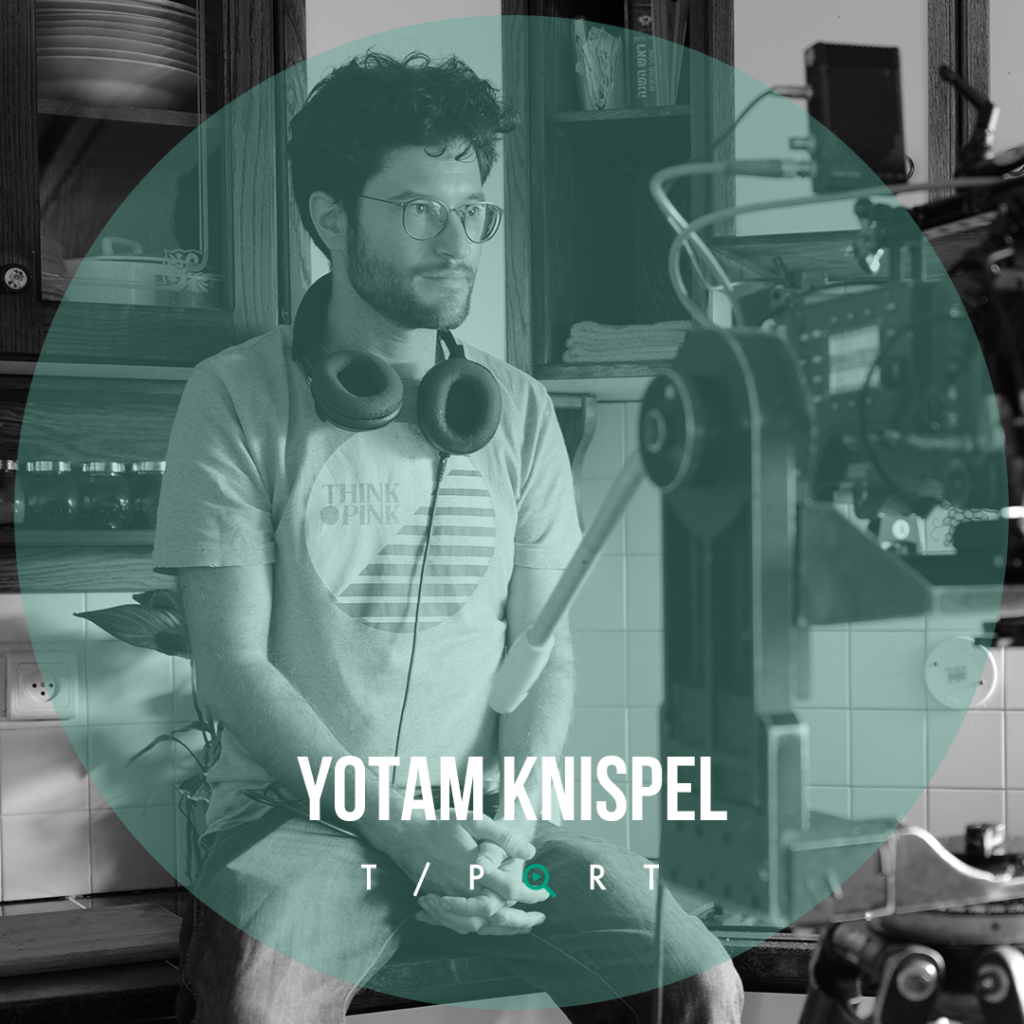
Rina can’t look at her son Dean, who’s under house arrest at her home. She has until tomorrow to decide if she can stand by his side. So begins Yotam Knispel’s award-winning short LOVE HAS NOTHING TO DO WITH IT, a tense drama about the relationship between a mother and son.
The film, presented on T-Port thanks to our partners at The Gesher Multicultural Film Fund, was picked by our expert curator Olha Raiter, who was especially moved by the mother-son relationship portrayed. We caught up with the director to find out his inspiration, his process, and what he has learned along the way.
Introduce yourself
I’m a writer-director and lecturer for screenwriting, currently working on my first feature film.
I have wanted to make films since I was 14. I started with stop-motion shorts with my Lego figures. When I realized I could make films about humans too, I made several short films (DROP, FUCK BUDDIES, BAMBINA, GIRL WITH A FORK IN A WORLD OF SOUP) which were screened in various film festivals around the world and won some awards and residencies.
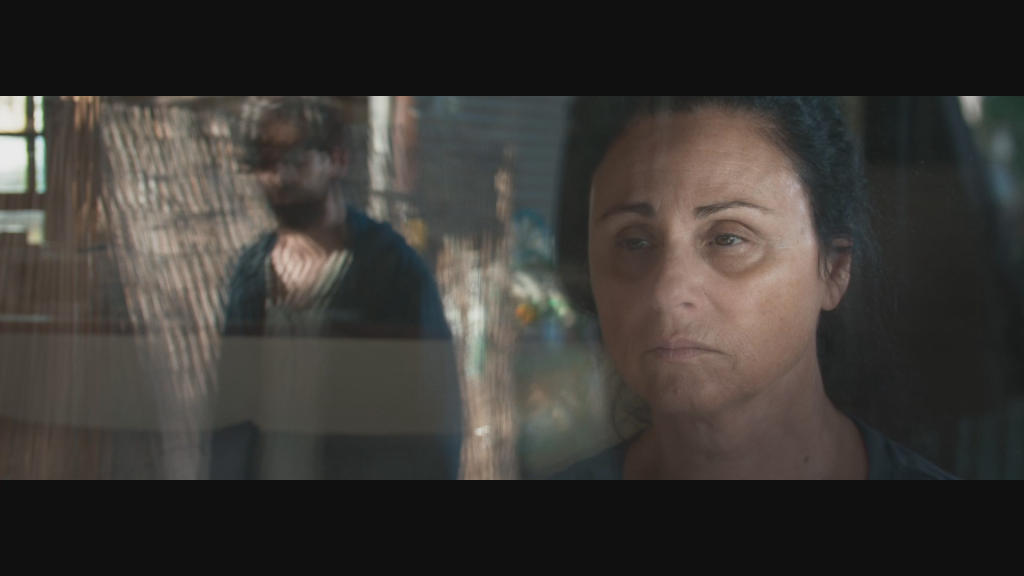
How did you feel when you found out you had been selected for the T-Port Lighthouse?
Flattered. Curious. Fingers crossed as to where it leads.
What does making the selection mean to you and the future of your short film?
Anything that would get our film to reach audiences worldwide. I can’t wait to screen it in countries that I’ve never been to before.
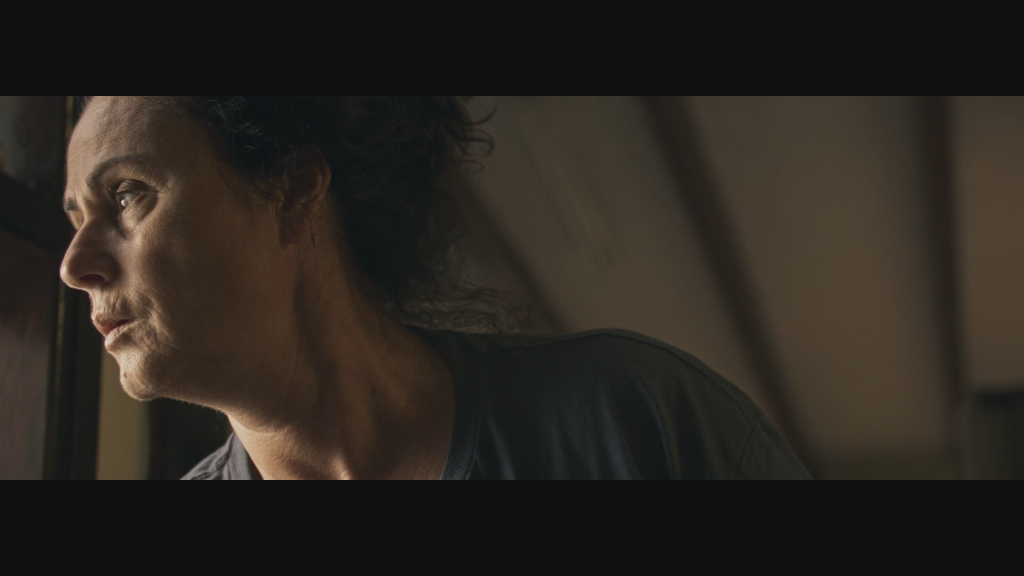
What was the inspiration behind LOVE HAS NOTHING TO DO WITH IT?
I read the news about a guy I briefly knew, who was arrested with horrible charges and waited for his trial in a house arrest at his mother’s. I just couldn’t stop thinking about that mother.
What does she feel, between these four walls with him? We hear a lot of stories about various accusers, but we rarely talk about their moms. Writing her story triggered me to work on my relationship with my own mother. It also was a way of tackling my own fears of having children.
Tell us about how the filmmaking process went for you – did you enjoy it? and what did it teach you?
I enjoyed every moment. I’m grateful and energized during production. We shot for 3 days and in one location in a country house. Small, super efficient crew. It helped us to create the ultimate settings for this intimate story. The process was really just like carving, we chewed the script and collectively tried to find better ways to express its essence. You know you’re doing something right when it feels like everybody’s making the same movie, but bringing their own passion to it.
I learned that the most important decision as a director is casting right. Seeing the potential of chemistry between actors. And because I like to move around the set a lot, I learned the importance of wearing comfortable pants on set. Loose. No pockets. Definitely no jeans!!
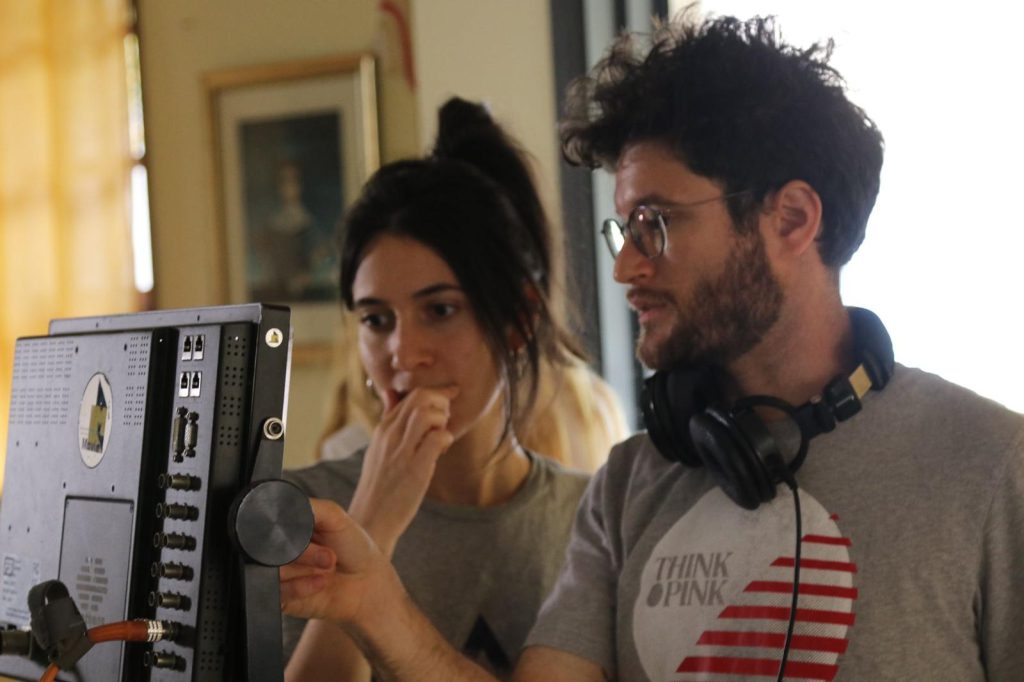
Having been through the process of making your short – what do you wish someone had told you in advance?
It could’ve been great if I knew that the 4th scene in the script would become the opening shot. We shot an opening sequence which we ended up cutting. I’m happy we shot them because it warmed us up. But even on set, I felt these scenes were off. I love the constant lesson:
It’s not about how you write a scene, it’s about how you delete it and simplify.
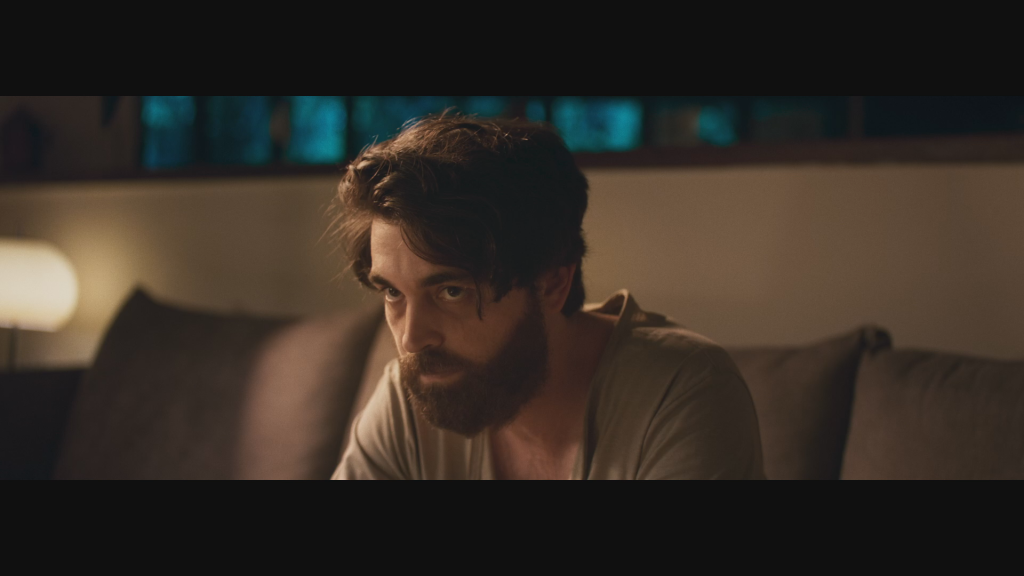
What were the biggest challenges you encountered during making your film?
To keep away from the obvious. For example, I wanted the son (played by brilliant Yossi Yarom) to be relatable, clumsy and fragile. I didn’t want to portray him as a monster. In his mother’s view, first, he is a son. He has a beating heart. Feelings. Fears. And then, there are the crimes that he’s accused of.
How was it to collaborate with your cast and crew? Have you formed any particular meaningful connections?
It’s funny how when you try to make a social, tense, horror-like drama, it actually makes everyone on set become funnier. We took the film seriously, but we didn’t take ourselves too seriously.
The real benefit of shooting in one location is that it organically creates a comfortable environment, which benefits the drama and serves as a key element for creating meaningful connections between everybody. You know you’re on a good set when people are laughing, regardless of what the film is about.
I wrote the script with Hannah Azoulay Hasfari in mind, and even though she’s a well-known actress who’s notorious for turning down roles, we clicked instantly. The fun part was working on establishing her relationship with Yossi as her son by rehearsing, but it was important for me to not rehearse too much. Their connection was magical. I hope their unique bond is felt when you watch the film. The best thing I got from this short was becoming close friends with them.
We text a lot, gossiping and sharing cooking recipes.

Tell us about the visual choices in your film. What were your main goals and techniques in creating the visual style of your film?
It’s a horror film without horror. We used horror elements but in a realistic context. I wanted to feel like it’s summer outside of their house, but inside, it’s winter.
Cinematographer Zohar Mutayn and I did a lot of camera tests before we chose Scorpio Anamorphic Prime lenses, shot on ARRI Alexa LF. We chose wide radio (2:39) which allowed us to capture more of the house, and create a suffocating atmosphere from Rina’s surroundings. We talked a lot about how to visually express that frozen tension between the characters.
Casting their house was obviously a major decision. I wanted the house to feel old and haunted, but not fable-like. The house we chose has weird angles and shapes. It’s kinda built wrong. It has a wooden triangle ceiling, which makes the house more threatening. I also wanted the walls to have paintings of the artist Yosl Bergner, who paints gloomy figures with big, sad eyes. His paintings are cold but emotional. Just like I feel about this film.
Tell us about the sound choices in your film
Sound design is my favorite fun place. Sound designer Yoss Appelbaum and I tried to take it to the horror-like areas, by building the haunted, suffocating ambiance of the house. Clocks ticking, neighbour’s dogs distant barking… I wanted the house to feel like a ship lost at sea. We used the sounds of boats. Wooden floor cracks served the feeling of uncertainty and unbalance – like their ship is about to flip. It was important for me to have the sounds heard from the mother’s subjective point of hearing, so we could be close to her. Her son’s steps sound like the steps of a big, clumsy, heavy creature. It contrasts the visual, because he looks thin and delicate.
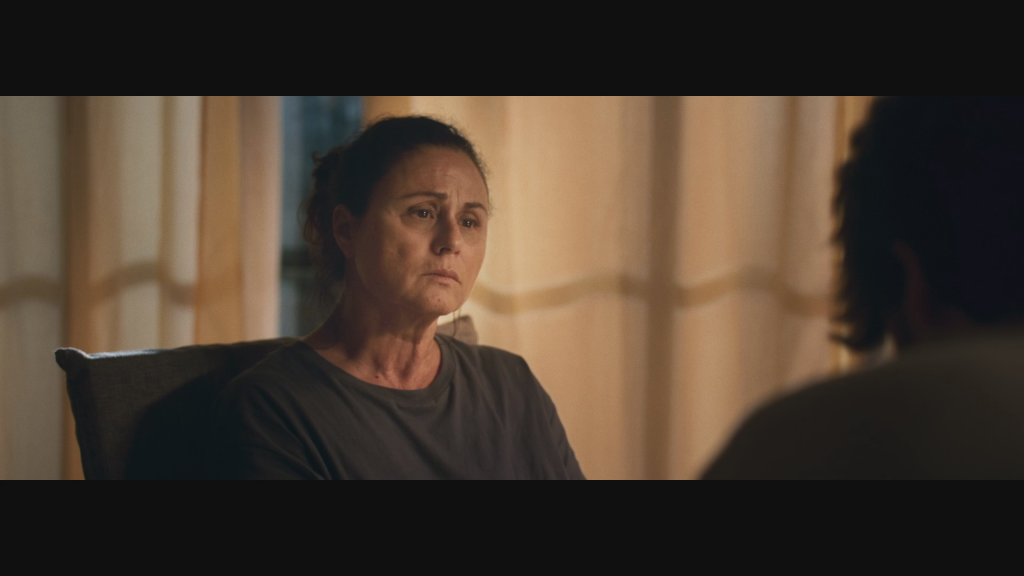
What would you like people to take away from your film?
I want people to think of the mothers and families of someone who is accused of crimes. They don’t have the right to be perceived as victims, and nobody says a word about the price they pay. I think that our current society tends to collectively blame even the relatives of the accused, but I wish that this film could make the argument that it might be wrong and unjust.
Did you have a specific strategy for promoting your film? If so, please tell us about it.
Mainly submitting to film festivals. We have posters, excerpts and radio interviews we did when we were nominated for an Academy Award in Israel in September.
What did you find (or still find) as especially lacking in the process of distributing and promoting your film? What was especially challenging?
I think it’s extremely hard to have your short film noticed. It helps if it’s good, but sometimes it doesn’t really matter. You have to develop the right skin. I’m not easily frustrated by declines, and honestly, I want to believe that if you work hard, your love letter in a bottle will eventually find its audience over the sea. I’m having difficulties keeping that faith sometimes, but I’m workin’ on it.
What do feel young film talents lack the most today, after graduating from film school? Where are the gaps in the film industry?
Film schools can make us overly conscious of the creative process. We ask ourselves too many damn questions. I think the main gap after graduation is a sense of responsibility to simply create. Anything. Small projects. Shooting on your phone. Whenever my fears or weary doubts rise, I try to remind myself that what’s really important, is the next thing I’ll do. It’s critical to realize early: It’s all up to you, and it’s all about pushing the ball on a daily basis to get things made with the sources you can get your hands on.
What are your expectations from T-Port? Did T-Port already help your film in any way?
From my previous shorts, I know it’s a longg(ggg) process that takes time, but I’m eager to screen our short outside of Israel already. Just like any filmmaker, my deepest fear is that the film might lose relevance or not be screened. I’m not in need of approval, or hearing it’s good, frankly, I just want more eyeballs to watch it.
If you are a film industry professional and would like access to the catalogue and more, find out here how to sign up.
Filmmaker? Upload your short film to T-Port or sign up for our newsletter to get regular updates on the current trends and exciting innovations in the short film universe.
Back to T-Port Blog
